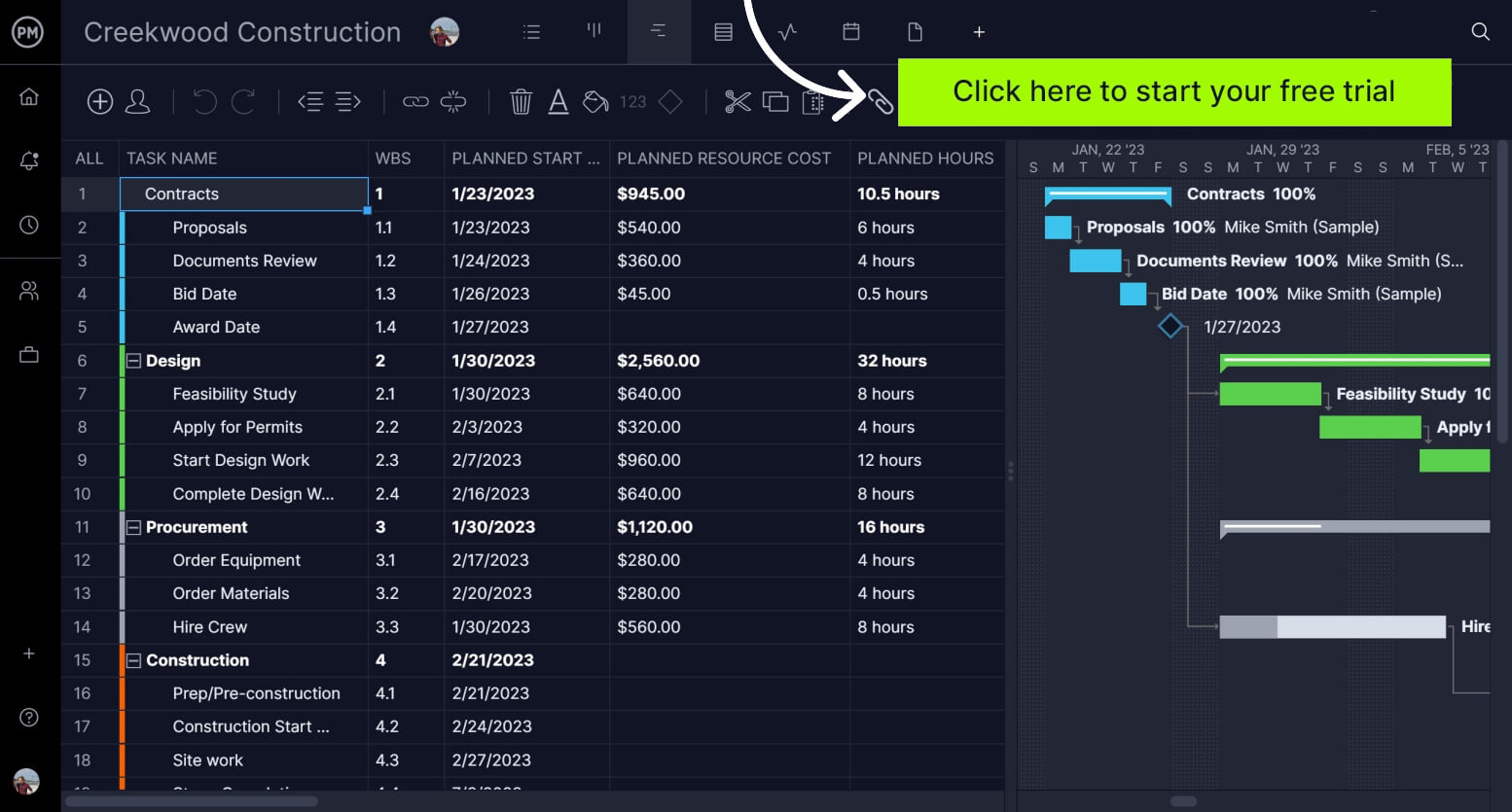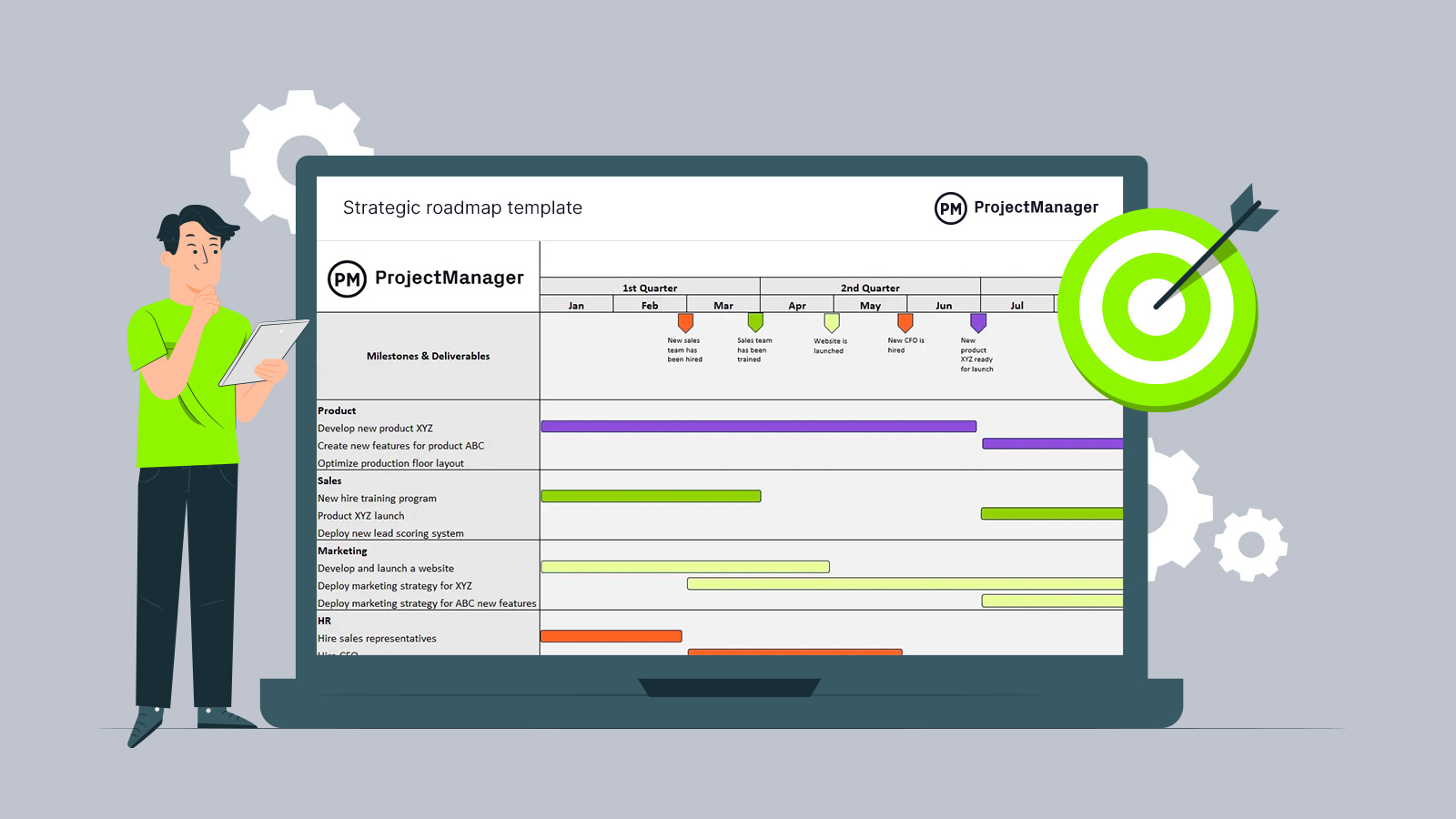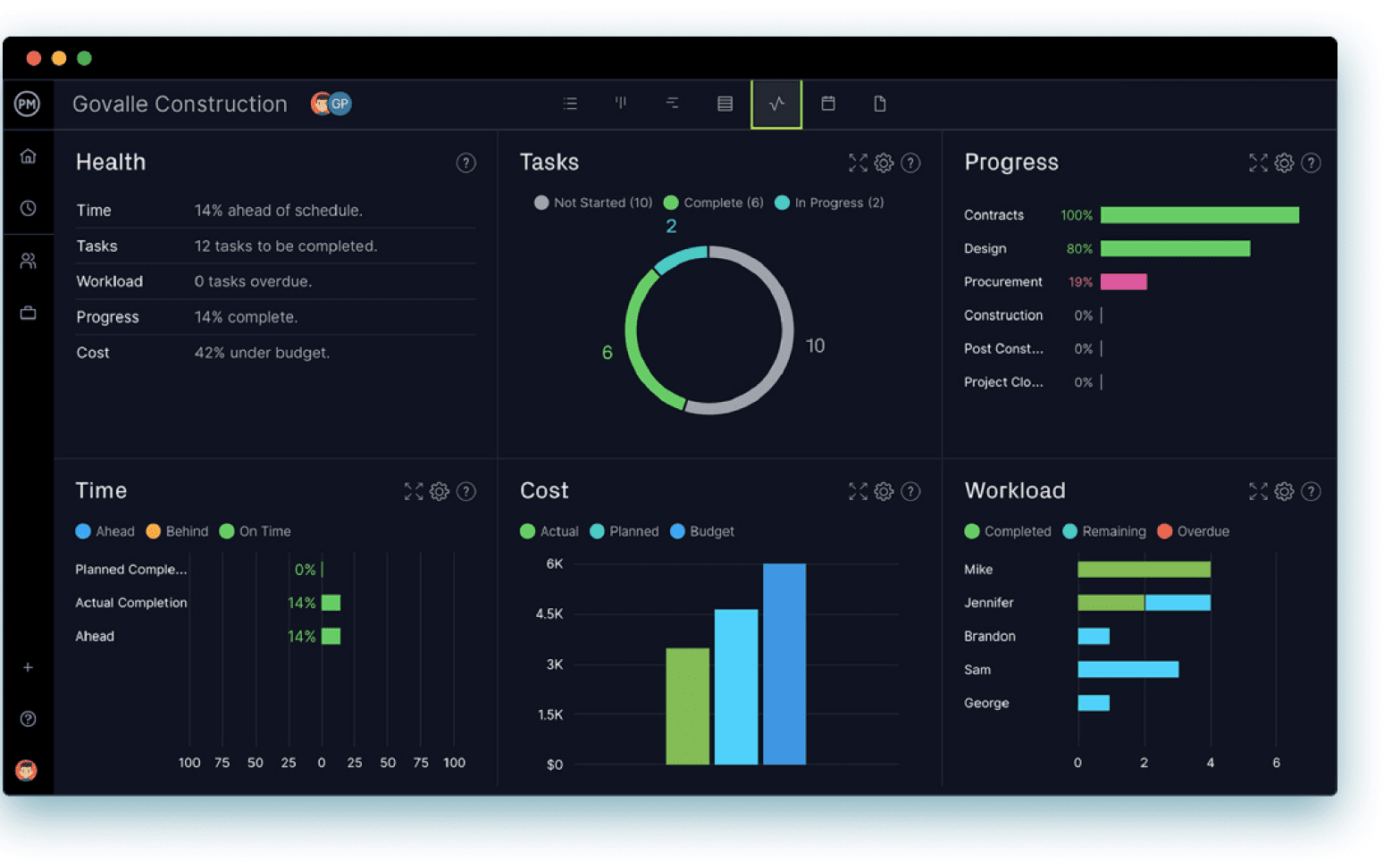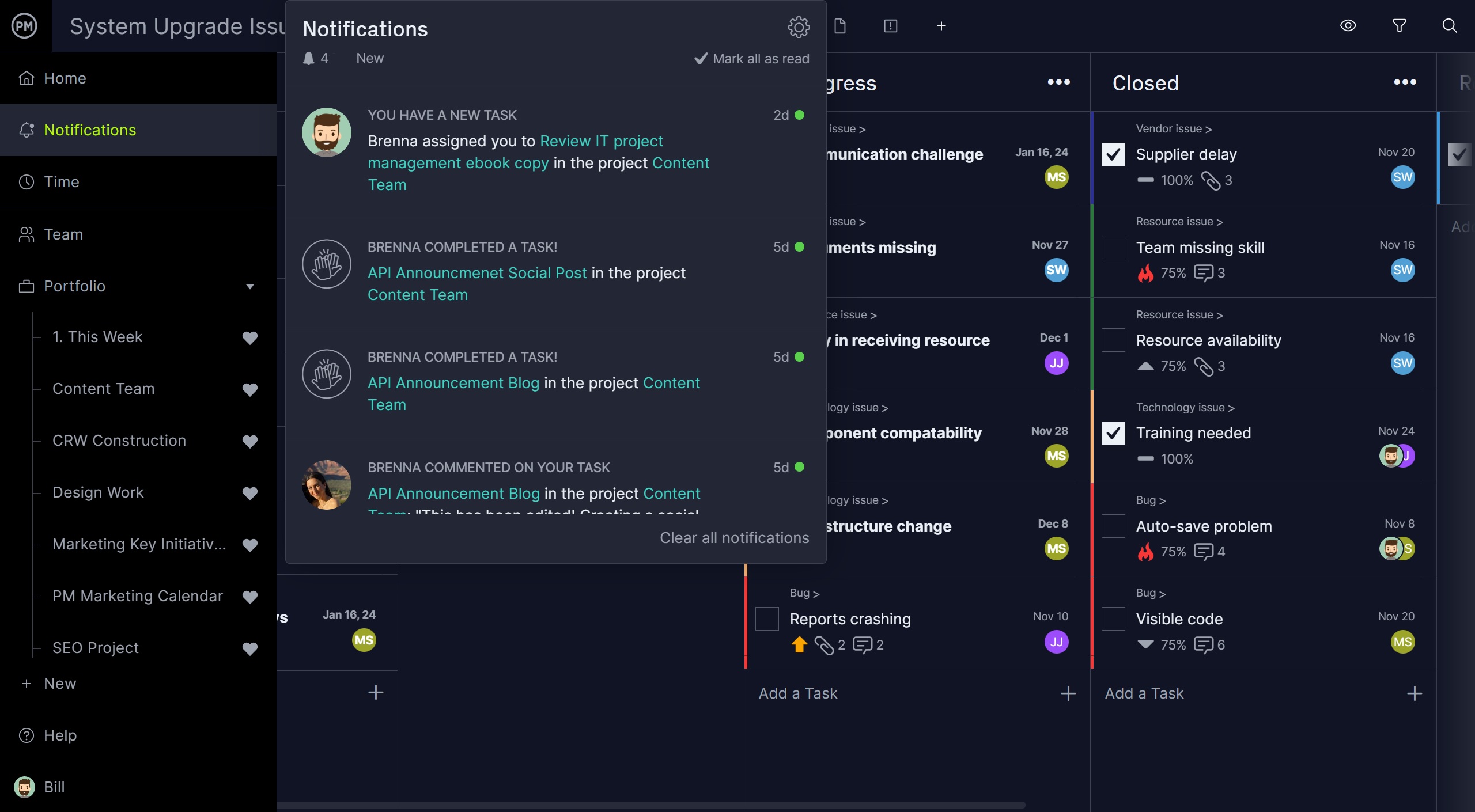When you’re a PMP, program manager or portfolio manager, you need to deliver all those multiple projects on time and within budget. This requires an organization with a well-developed project portfolio management process. It’s essential to keep projects successful for any organization to thrive. This is done by using a project management maturity model.
To do so, first one must understand project management maturity and what the project management maturity model is. We’ll help by illustrating examples of different project management maturity models and offering a step-by-step way to assess the project management maturity of an organization.
What Is Project Management Maturity?
Project management maturity is a term used to describe how a well-equipped a company is to manage projects, programs and project portfolios. The more mature an organization’s management, the more likely they’re going to execute projects successfully and meet its strategic goals. On the other hand, if an organization has underdeveloped management, the more likely that its projects will have trouble meeting deadlines and staying on budget.
In other words, you can look at an organization with strong project management maturity as one that’s managing the planning, execution and compilation of its projects well. That’s because the project teams involved with these successful projects follow a defined and repeatable process, which mitigates risk and achieves objectives.
ProjectManager is award-winning project management software that gives you the project management tools you need to improve processes. Our multiple project views give everyone the tools they need to plan, manage and track their projects in real time. Management gets robust Gantt charts that link dependencies, filter for the critical path and set a baseline to track project variance, while teams can use the visual workload kanban boards, task lists, calendar or sheet views. All project views update together in real time so you’re always working on the most current data and tracking progress and performance. Get started with ProjectManager today for free.

The power of a high project management maturity is that the organization isn’t relying on one or two talented professionals to shoulder the bulk of the responsibility for managing its projects. Rather, it’s a team effort guided by standardized processes, well-defined roles and responsibilities and collaboration.
For these reasons and more, being able to measure the project management maturity of your organization will help you run a better organization and deliver on your goals and objectives through the completion of successful operational and strategic projects. This is true across all industries, from construction to manufacturing, professional services to IT and, really any organization that is managing projects.
Improving an organization’s project management maturity will reap many rewards. It helps to complete projects on time, manage risk, achieve project goals, deliver more benefits and handle change with minor disruption. These responsibilities usually fall under the purview of a project management office (PMO) and can be facilitated by using project management software.
What Is a Project Management Maturity Model?
The project management maturity model is a way to measure your organization’s ability to handle its projects. Using project management maturity models gives you the metrics to measure and score your organization’s capabilities with project management processes. They’ll also provide you with direction in terms of identifying issues and developing responses that address them to create improved project management in the future.
Examples of Project Management Maturity Models
There are many project management maturity models an organization can use to measure its proficiency in managing projects. Below are three of the more popular ones. Each of the following models provides criteria and a system for scoring to help organizations assess their project management capabilities.
Capability Maturity Model (CMM) by CMMI Institute
This project management maturity model is designed specifically for software projects, but can be applied to any industry, and works by evaluating the standardized processes of the organization There are two approaches inherent in CMM, staged and continuous. Staged tracks a set of processes throughout the organization and continuously looks at process capabilities based on the priorities of that organization. This will help an organization assess and improve its project management capabilities by ranking the organization based on five maturity levels: initial, managed, defined, quantitatively managed and optimizing.
Organizational Project Management Maturity Model (OPM3) by PMI
Developed by the Project Management Institute (PMI) to help managers understand the maturity level in projects, programs and portfolios by using the 10 knowledge areas of the Project Management Body of Knowledge (PMBoK). These metrics are project integration, time, scope, cost, quality, human resources, risk, communications, stakeholders and procurement. After assessing these areas, a maturity stage is assigned, from standardized, measured and controlled to continuously improved. This is a time-consuming process, but it’s also thorough and will result in improved project management capabilities.
Portfolio, Program and Project Management Maturity Model (P3M3) by Axelos
This wide-angle approach looks at the whole organization and its interdependent processes for an accurate maturity assessment. It does this by a five-stage ranking scale, which we’ll define later, based on seven core processes: organizational governance, management control, benefits management, risk management, financial management, resource management and stakeholder management. The goal is to improve organizational processes, but it also addresses project portfolio management.

Get your free
Strategic Roadmap Template
Use this free Strategic Roadmap Template for Excel to manage your projects better.
How to Assess the Project Management Maturity of an Organization
While there are many project management maturity models, most share a common approach of investigating and rating various aspects of how an organization is managing its projects. They all tend to touch on these areas when assessing the project management maturity of an organization.
Project Integration Management
This is about the coordination of all project management elements and is usually managed in five stages. Those stages are developing a project charter, creating a project management plan, directing and managing the work on the project, performing integrated change control and closing the phase or the project.
Project Scope Management
Here you’re defining and outlining all the work of the project. This includes the project’s objectives, tasks, outputs and deadlines. Project scope management is the process of identifying all project documents, objectives, goals, deliverables, deadlines and budgets, which is done in the planning stage of a project.
Time Management
A process where a project manager deals with allocating the right amount of time to each task. The project manager will also determine the deadline for tasks, project phases and delivery of the project. Time management works to do all of this efficiently so that the project meets its schedule and delivers the project on time.
Cost Management
This process works to better estimate, budget and control costs throughout a project’s life cycle and keep expenditures within the approved budget. It does this through resource planning, cost estimating, cost budgeting and cost control.
Resource Management
The efficient planning, organizing, scheduling and managing of a project’s resources is the goal of resource management. Resources are both human and nonhuman and can include teams, tools, equipment, tech, facilities, raw materials and so on. The goal is to maximize the utilization of these resources and get the most out of them for the least cost.
Risk Management
Risk in a project can be positive or negative. Positive risks should be taken advantage of and negative risks mitigated. To do this, risk management is a process of identifying risk, noting its impact on the project and the likelihood of it occurring, then setting up a plan of action and assigning team members to own those risks if they show up as issues in the project.
Strategic Roadmap Template
This strategic roadmap template allows you to visualize the timeline of all the projects that the business departments of your organization execute to accomplish its strategic goals and objectives. It’s ideal to ensure that all the projects and programs in your portfolio are aligned with your strategic plan, which is especially important for organizations with a lower project management maturity level.

We offer a variety of free PMO templates you can use to manage all aspects of your projects, programs and portfolios.
The Levels of Project Management Maturity
As we noted earlier, there are usually five levels of project management maturity. The below stages go from poorly planned and executed or not completed projects to project management where teams or organizations have defined processes for performing project management that plan and complete projects on time and within budget. Let’s define each of these five stages.
1. Initial Process
This is when an organization has yet to implement standardized project management processes and there’s no consistency between projects. This points to a lack of teamwork and the projects relying on a few capable individuals.
2. Structured Process and Standards
Here the organization is attempting to create standardized, repeatable processes. Costs, time and functionality are being tracked, reports are being made and monitoring high-level metrics. However, this is mostly happening with larger projects, smaller ones are still running more chaotically.
3. Organizational Standards
The organizational level indicates an organization is documenting processes and integrating them into all parts of the organization, including its employees, who are trained and receive peer reviews. Here, most projects are being completed on time and within budget.
4. Managed Process
At this level of maturity, organizations implement clear metrics to track processes and control them. The project team and management understand the project status and requirements. This is a high level of maturity that usually takes years to achieve.
5. Optimizing Process
This is where an organization has established processes. They’re pursuing continuous improvement, such as reducing and preventing defects and incorporating automation. This is the highest level of maturity, which is rarely achieved but is always the goal.
How ProjectManager Helps Build Project Management Maturity
To run a project management maturity model requires the same tools and techniques used to manage a project, which is why project management software is critical for both processes. ProjectManager is award-winning project management software that has powerful risk management, task management and resource management features to manage projects, programs and portfolios, and increase an organization’s project management maturity. Our collaborative platform and monitoring tools that capture live data help organizations improve their project management maturity.
Use Team Collaboration Tools
For an organization to improve its project management maturity it must have clear communication within the organization. That means when managing projects or assessing the project management maturity, organizations must have the real-time data that our software delivers. This includes connecting teams no matter where or when they work, and the ability to share files and comment on tasks to facilitate team collaboration. With email and in-app notifications, everyone is always working on the same page.

Track Project Costs and Progress
You can’t improve your project management maturity without having the tools to monitor your processes and evaluate their effectiveness. Our software delivers real-time data with dashboards for projects or portfolios and reporting features that track metrics such as time, cost and more. You can generate reports that can be customized to show only the data you want to see and then they can be easily shared with management to keep them updated. Our live dashboard doesn’t require a lengthy and complicated setup, which you’ll find with lightweight tools. Our dashboard is ready when you need it.

Our software is ready to handle organizations and their projects regardless of their project management maturity. We can automate your workflows with task approval settings to ensure quality, which is part of improving project management processes. Our tool helps you assess your project management maturity and gives you the features you need to improve them and better deliver your projects on time and within budget.
ProjectManager is online project management software that connects teams whether they’re in the field, in the office or anywhere in between. We also have resource management features that help you balance your team’s workload to keep them working at capacity and stay productive. Join teams at Avis, Nestle and Siemens who are using our software to deliver successful projects. Get started with ProjectManager today for free.


